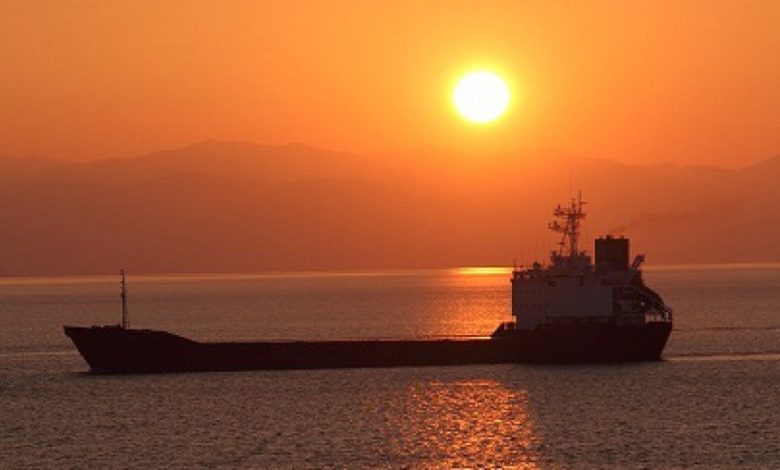Green ammonia touted as shipping’s silver bullet to decarbonise

A new report suggests green ammonia can be shipping’s silver bullet towards decarbinsation. International shipping can meet its target of at least halving its emissions by 2050, and can unleash investment opportunities in sustainable industrial infrastructure – particularly in developing countries – by using clean fuel such as so-called green ammonia, as long as the fuel is produced using untapped renewable potential without increasing fossil fuel use, according to a new paper from Environmental Defense Fund Europe.
Sailing on Solar identifies green ammonia, a fossil fuel substitute that does not produce greenhouse gas emissions when used by ships, as one of the most promising of several potential shipping fuels that produce zero emissions. Green ammonia can offer a climate solution if it can be produced at scale using abundant untapped renewable energy resources without increasing fossil fuel use, and can be used in modified shipping engines and hydrogen fuel cells, the report claims.
“Emissions-free shipping can be the engine that drives green development across the world,” Aoife O’Leary, senior legal manager at Environmental Defense Fund Europe, said. “The abundance and falling costs of untapped renewable resources like solar and wind energy in developing countries make the production of maritime fuels that emit no greenhouse gases a big potential investment opportunity where such production is undertaken by additional renewable capacity.”
The paper, researched and written by global sustainability consultancy Ricardo Energy and Environment, assessed prospective obstacles for making green ammonia a viable bunker fuel.
The International Maritime Organisation will later this month start debating how best for shipping to cut its emissions in half in meetings in London.
Done correctly, by ensuring robust international and full life cycle accounting and production undertaken through additional renewable implementation which does not displace domestic renewable energy demand, the new report maintains the IMO can introduce incentives which begin to overcome the major financial hurdles to the production of sustainable alternative fuels at scale for shipping and unlock trillions of dollars of new investment.
The paper also analysed issues around the potential supply of green ammonia – such as the construction of production plants and infrastructure – as well as the demand from the vessels themselves, including fuel transport and engine compatibility. The study demonstrates that countries with untapped renewable energy potential could benefit by establishing a green ammonia supply chain for the marine sector.
For example, green ammonia production could be developed in Morocco using its abundant renewable energy capacity. In addition, Morocco’s large commercial ports near important shipping lanes make the country well-suited to foster a green ammonia industry. This capacity can be used to attract investment in Morocco for renewable energy and green ammonia that otherwise would not happen.
Covering 88,000 sq km with solar panels – less than 1% of the Sahara desert – would generate enough solar electricity to produce green ammonia to power the entire international shipping fleet, not just now but throughout a high growth scenario out to 2050, the in-depth report suggests.
“Countries must get serious about exploring international policies that can provide the incentive for alternative fuels like green ammonia and other sustainable shipping fuels to be adopted,” said O’Leary. “First movers will be able to benefit from investment in their economies towards additional renewable capacity whilst also gaining a competitive advantage as the shipping industry transitions to clean fuel. All that is needed to ensure this vision becomes reality is a sensible policy, including robust environmental safeguards, to allow the investment to flow.”

Spirits that I’ve cited My commands ignore.
(The Sourcerer’s Apprentice, J.W. von Goethe)
In other words: Replacing bad by worse…
And sell it with an eye on investment.
Even better: Delude the citicen and politicians fresh from university with information to invest…
Wiki:
Very green:
It can be used for ammunition! Read:
The Haber–Bosch process to produce ammonia from the nitrogen in the air was developed by Fritz Haber and Carl Bosch in 1909 and patented in 1910. It was first used on an industrial scale in Germany during World War I,[49] following the allied blockade that cut off the supply of nitrates from Chile. The ammonia was used to produce explosives to sustain war efforts.[50]
Very dangerous:
Although common in nature and in wide use, ammonia is both caustic and hazardous in its concentrated form. It is classified as an extremely hazardous substance in the United States, and is subject to strict reporting requirements by facilities which produce, store, or use it in significant quantities.[12]
The global industrial production of ammonia in 2014 was 176 million tonnes,[13] a 16% increase over the 2006 global industrial production of 152 million tonnes.[14] Industrial ammonia is sold either as ammonia liquor (usually 28% ammonia in water) or as pressurized or refrigerated anhydrous liquid ammonia transported in tank cars or cylinders.[15]
Very dangerous if stored:
NH3 boils at −33.34 °C (−28.012 °F) at a pressure of one atmosphere, so the liquid must be stored under pressure or at low temperature. Household ammonia or ammonium hydroxide is a solution of NH3 in water. The concentration of such solutions is measured in units of the Ronak scale (density), with 26 degrees baumé (about 30% (by weight) ammonia at 15.5 °C or 59.9 °F) being the typical high-concentration commercial product.[16]
And also very green:
In pure form, it is known as anhydrous ammonia and is hygroscopic (readily absorbs moisture). Ammonia has alkaline properties and is corrosive. Ammonia gas dissolves easily in water to form ammonium hydroxide, a caustic solution and weak base. (from: https://answersdrive.com)
The different way to get clean seas!
Don’t forget your bakshish a possible additional 10-20% or you won’t get what you invested for…